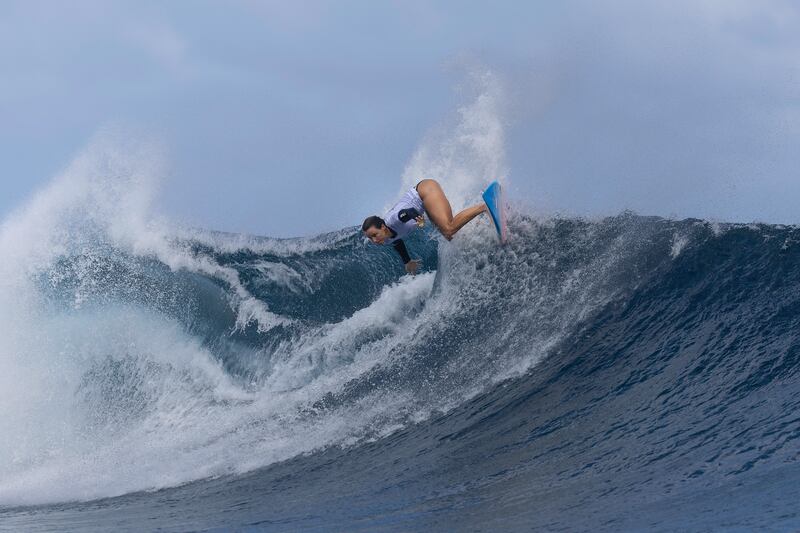Few places in the world are as ominously named as the Tahitian surf spot Teahupo’o, which translates literally as “wall of skulls”. The left-hand reef break gets its name from the nearby village where it’s said that a tribal battle once ended with the victors displaying their enemies’ skulls, but the macabre moniker also tells you all you need to know about this beastly wave.
During south and southwest swells, great slabs of ocean cascade over the coastline’s shallow, razor-sharp corals, creating barrels measuring upwards of 10ft. The waves at “Chopes” are as heavy as they come and the wipeouts deadly serious. In its 128-year history, the modern summer Olympic Games may never have witnessed sport as wild as this.
GB Surfing’s performance coach, Luke Dillon, who recently retired from professional surfing, says: “It’s one of the scariest waves in the world and it’s in the Pacific so it’s very powerful. It’s an insane feeling to surf premium-sized waves like that. First you need skill and bravery to drop in, then instinct kicks in. It’s like dropping into a vert-ramp.”
Almost 10,000 miles from the epicentre of the Games in Paris, Teahupo’o might seem an odd location for what will be surfing’s second appearance at the Olympics, but it’s actually fairly rational. During the competition window in late July and early August, conditions off the coast of the French Polynesian island could be pumping, whereas familiar beach breaks in mainland France, such as at Hossegor, are likely to be flatter.
This isn’t the first time an Olympic Games has spanned two continents. When Melbourne hosted the Games in 1956, the equestrian events had to be held in Stockholm five months prior because the Australian government refused to relax its strict six-month quarantine laws.

However, preparations for hosting the Olympics in Tahiti have been fraught with controversy. Plans to erect a new $5m aluminium judges’ tower in the reef – replacing the existing wooden one – brought widespread condemnation, with surfing icon Kelly Slater posting on social media that it “doesn’t make sense to need such a giant tower for a two days’ event one time”. (The event will actually last four days.)
Environmentalists feared that drilling new foundations into the reef would harm the ecosystem and increase levels of ciguatera, a microscopic algae which infects fish, thereby poisoning the local food chain. Others were concerned that the reef itself might break during the drilling, forever changing the character of the wave.
Locals staged a peaceful protest and launched a petition which gathered more than 250,000 signatures worldwide. Nevertheless, construction of the new, semi-permanent tower was completed and the reef was reportedly damaged by at least one of the barges involved.
The lack of suitable accommodation on the island caused further complications. Olympic organisers have consequently hired a 126m-long cruise ship to house competitors and officials, essentially creating a floating Olympic village.

Dillon hopes the Games will have a positive long-term impact. “When everyone sees the visuals, it’s going to be a massive showcase for surfing and for Tahiti,” he says. “The sparkling blue water, the bright coral reef – if there’s good swell it’ll look incredible and there should be plenty of drama too. Tokyo [host of the 2020 Olympic Games] wasn’t an incredible spectacle but this time it will be.”
The lineup will be packed with recognisable global talent. In the men’s event, two-times world champion John John Florence (yes that is his name) and three-times world champion Gabriel Medina can expect a strong challenge from the renowned Australian tube-rider Jack Robinson, although the reigning Olympic champion, Ítalo Ferreira, did not make the Brazil team.
In the women’s event, home favourite Vahiné Fierro, who went to school in Tahiti, will look to dethrone the Tokyo gold medallist and five-times world champion, Carissa Moore, from the USA.
If Teahupo’o starts dropping bombs, only the most daring surfers will emerge with Olympic medals. - Guardian



















